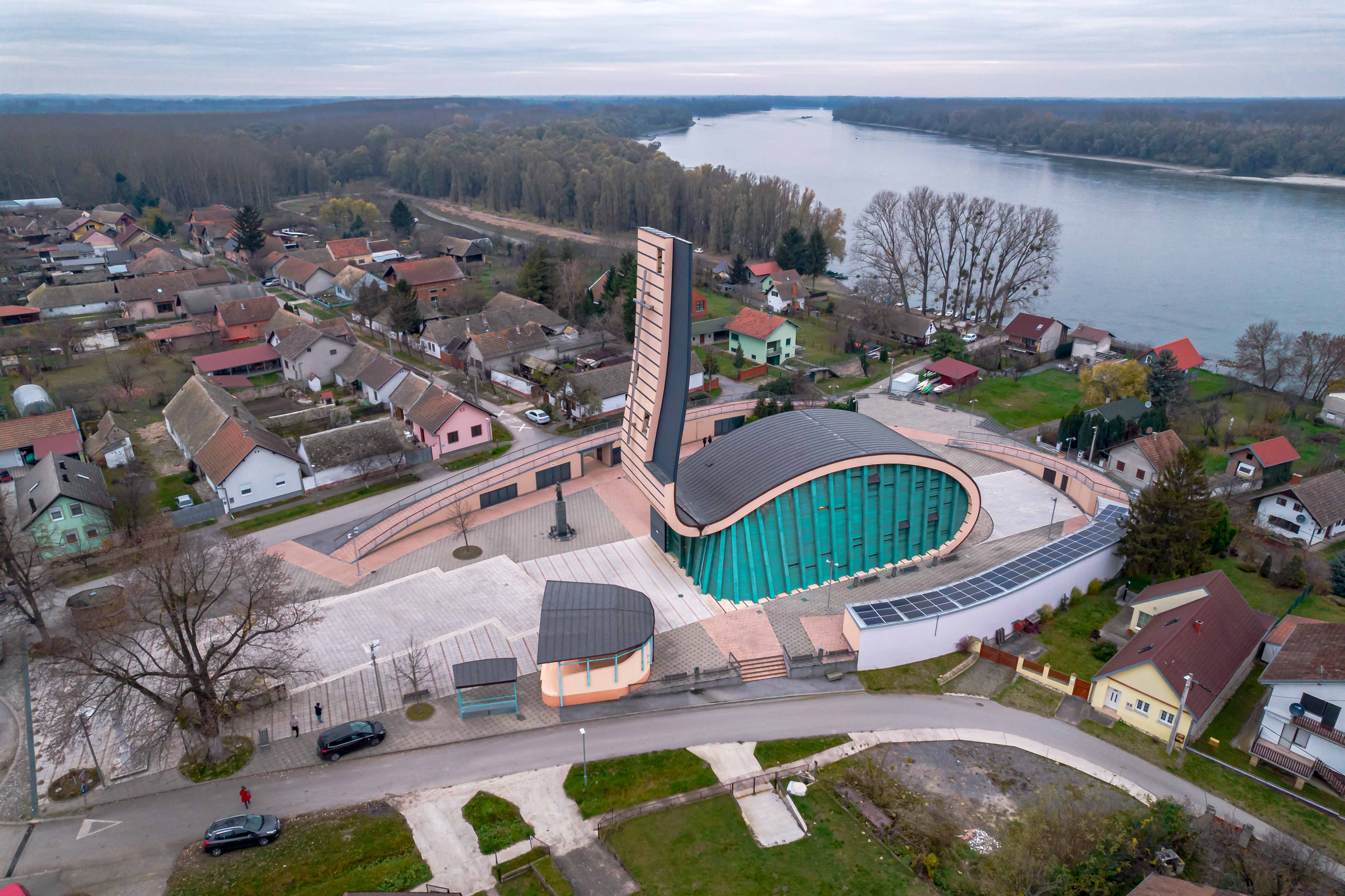Discover the Croatian Danube: Fishing Village of Aljmaš (part 2)
August 21, 2022 – In TCN’s new series, Discover the Croatian Danube, we explore the little villages that lie on the banks of this mighty river. We started from the point where the river Drava “surrounds its water and name to the Danube”, in a small fishing village called Aljmaš. If anything, you might know that Aljmaš is a Marian shrine with a big modern church and that it’s somewhere in Slavonia (could be Baranja?). There is a lot more to these few streets that make the village. A very long and rich history in a geographically important and interesting position. Legends, traditions, and stories of hardship, friendship, and mischief. Learn about the former in Aljmaš part one and buckle up for the latter in the following paragraphs.
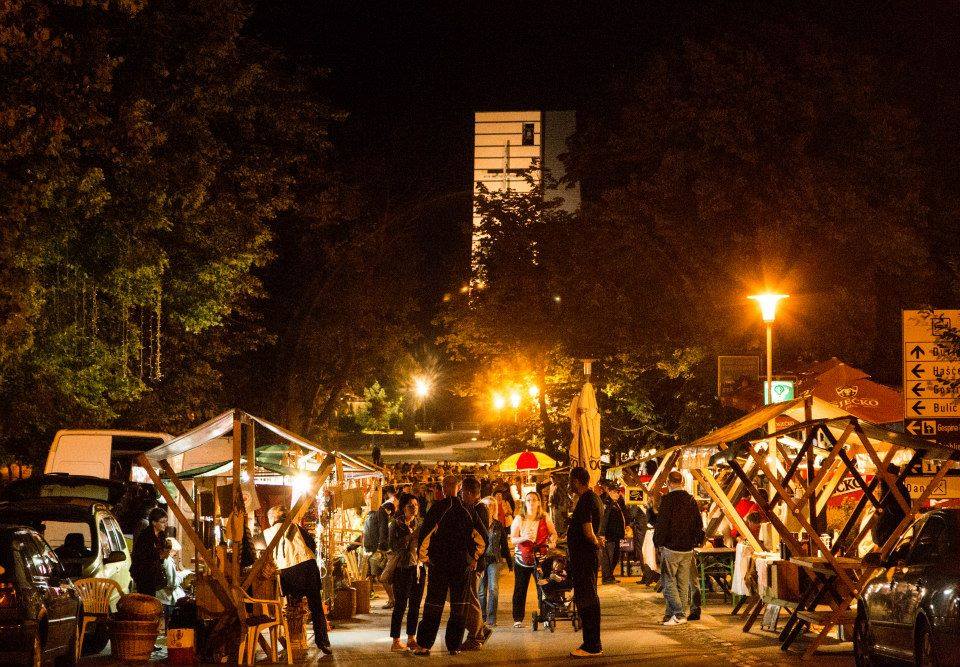
Photo: Aljmaška ribarska noć
Every village has its traditions. They are usually tied to the big holidays or otherwise important events, serve to bring people together, and are overseen by village Google. If you don’t know about the phenomenon, just ask any local grandmother about current events. In Aljmaš, its geography was used to make sure that things run smoothly. Before the modernisation of the infrastructure which took place in the 2000s, there were three canals for the rainwater to drain into the Danube. The embankments were used for social purposes where boys would gather and hang out on one, girls would do the same on another, and the third, you guessed it, was reserved for the smooth running of surveillance.
Other events couldn’t do without it, either. One of them was something called lelujle. In the spring, on Palm Sunday, there was a tradition for the ladies to let their romantic interests know who they were. This was, of course, done using old pots and pans which the girls would throw over the gates of their hopefully future husbands. This all gave the security something to do, as they would have to be the ones to either prevent the accumulation of unwanted old pottery or clear it out afterward. Usually with the words “better take this rubbish back to your mother’s house”.
The final quirky tradition presented here, and the author’s favourite is called buše. It occurs as the accompanying content, or the entertainment to go with the hard work that is the winter preparation of pig meat traditional for Slavonia. To lighten the mood, it was the task of a volunteer trickster to manage mischief. The primary goal was to play a trick on the host and acquire as much meat and snacks as possible, all while making sure that your identity remained completely hidden. Among other things, wine barrels were used to that end. The loot would then be served at a party.
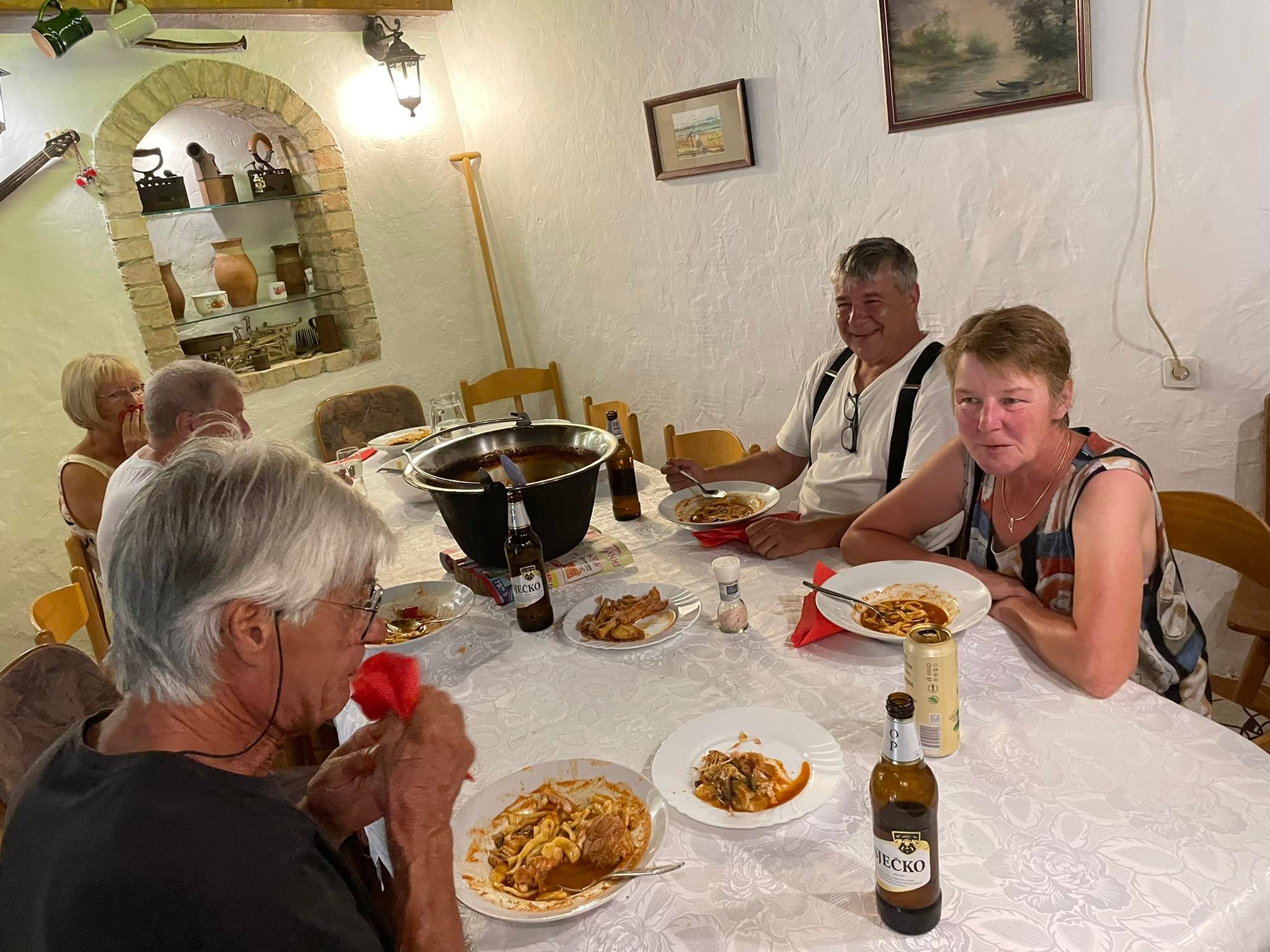
German fishing crew enjoying a delicious dinner
The Danube is the heart of Aljmaš. Fishing, camping, and picnics on the riverbanks are a way of life. Naturally, one of the most important local dishes is fish stew. This delicious, hearty meal is usually made with carp, catfish, pike, or a combination of those, over an open fire in a hanging pot, with an addition of smoked sweet and spicy paprika, onions, and wine. The ingredients can vary, and every good cook will keep their secret, but one thing is sure – love is always the primary spice. And Aljmaš breathes love for the river, for food, for good company, and a good time. A true testament to this is the annual Aljmaš Fishing Night. It was born spontaneously out of a night of good fun, cooking and a friendly cook-off between Dalmatian cooks with fish from the Adriatic Sea and local cooks with Danube fish. The eighth Aljmaš Fishing Night held in 2019 hosted over 8000 visitors who all cooked, ate, sang, and danced all night long. Unfortunately, due to the pandemic, the festival was put on temporary hold, but the organisers cannot wait to be back and have already started planning Fishing Night 2023. A little fishy told us it might be the biggest and best one yet. It is usually held in late May or early June. For more info, to get a feel of the atmosphere, and to make sure you don’t miss the next one, follow Aljmaška ribarska noć on Facebook.

Photo: Susi Petrijevčanin
The driving force of the events, traditions, and all other ways in which Aljmaš lives, is of course its residents. There might not be many, but they are the most generous and friendly bunch. Not only will they greet you with a smile, but they will also host you, show you around and feed you. One of them is Susi Petrijevčanin, a German nurse who decided to move to Aljmaš for love, the fresh air, and the perfect lifestyle. In her words, it’s a place where you can let your child go outside to play all day. They might come back muddy, tired, knees scraped, but they’ll always be happy and healthy. To ensure that a lunch of delicious fish stew is followed by lovely desserts, Susi has opened her dessert shop in Aljmaš, which you can follow here.
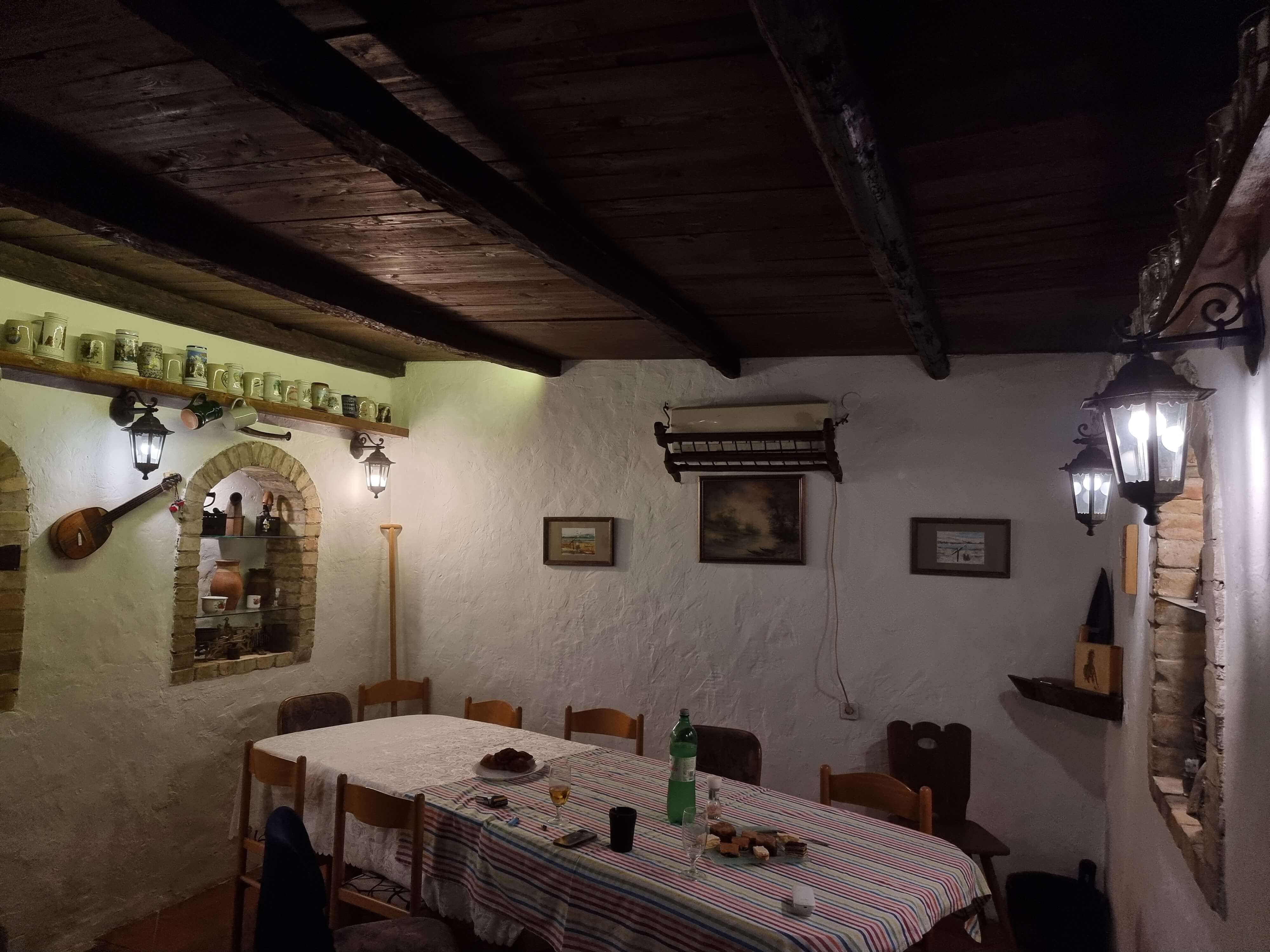
If any of this inspires you to visit Aljmaš, we encourage you to do it yesterday! Our guide Marina will be more than happy to help and will ensure that you have the best time. She will tell you a story or two about the village, her family who has lived in Aljmaš for five generations and might be traced back to Napoleon Bonaparte, as well as what the best ways are to catch and prepare fresh Danube fish. If she likes you, she might even show you her house which has stood in the village since before the 1900s. Whether it’s the original bricks, wooden structure, or the wine in the cellar, there is an incredibly special feel to the place.
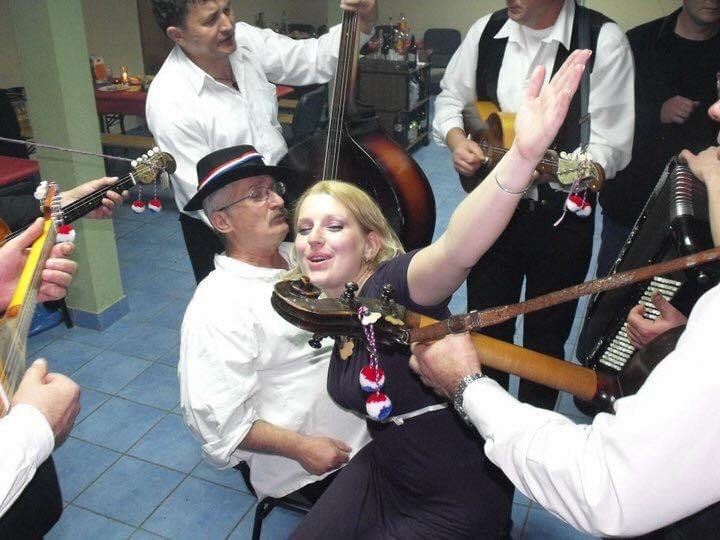
Marina with her father in traditional wear. Standard atmosphere in the village.
If you would like to contact Marina and plan your visit, email TCN This email address is being protected from spambots. You need JavaScript enabled to view it., Subject Aljmas.
How good is your knowledge of eastern Croatia? Take the CROMADS test above - how many places do you recognise?
For more, make sure to check out our dedicated Travel section.
Discover the Croatian Danube: Fishing Village of Aljmaš (Part 1)
August 15, 2022 – The blue, the mighty, the grand, the Danube. One of the most important rivers in the world that was the lifeline of an entire civilisation in Vučedol remains an aspect of life without which life would be unimaginable everywhere along its course. The German, the Austrian, and the Hungarian Danube are well known. It is time to discover the Croatian Danube. From Osijek to Ilok, its course is adorned with picturesque little villages. In part one of the series, welcome to Aljmaš.
Located some twenty-six kilometres east of Osijek and the same distance north of Vukovar, between the slopes of Alma Mons, or Fruška Gora, and the bank of the Danube, this small fishing village patiently awaits the arrival of all who seek peace and quiet. Four streets, a thousand or so houses, one big church, some 350 people. Is that all there is? Of course not. Hundreds of years of history, legends, traditions, and the best fish stew you would ever hope to try. An easy, quiet lifestyle with all that you might need. Even business opportunities.
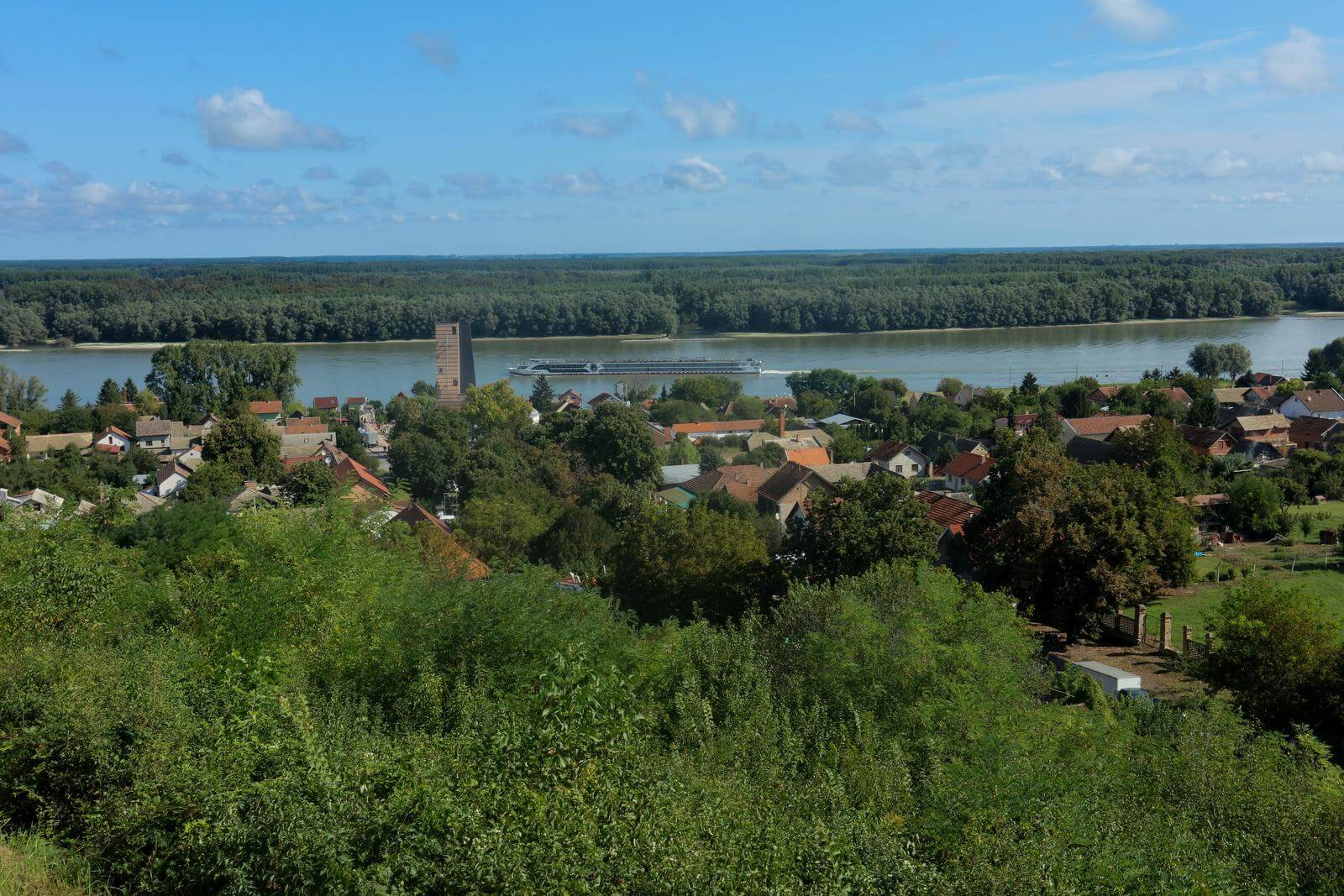
Photo: Dubravka Petric (PIXSELL)
It has been 785 years since the first mention of the name Aljmaš. The area itself, though, has hosted life since long before, and the locals keep finding remains of Roman architecture to this day. With its geographical position in proximity to the river, the settlement surely played an important role in the Roman empire. A theory excitedly discussed among the locals is that a yet-to-be-located battle between the Romans and the Illyrians might have happened in the valley of Aljmaš itself.
The historical importance of the village also lies in the fact that the well-known Hungarian humanist and poet Janus Panonnius was born in none other than Aljmaš. Though Čazma was previously believed to be his birthplace, his verses confirm that it was indeed “Where the Drava surrounds its name and water to the Danube”. And during the Austro-Hungarian rule, it was the beloved summer garden of Maria Theresa.
As for other popular sources of debate, there is an interesting theory that explores the possibility that Novi Sad in Serbia was built by settlers from Aljmaš, somewhat resembling the New Amsterdam story. In the early 18th century, when the plague was the main threat in Europe, a group of people from Aljmaš apparently sailed out on a raft down the Danube to escape the disease. They might have settled some 130 km east, around the area of today’s Novi Sad. To confirm this theory, the locals point out that the streets of Aljmaš were called sadovi, which is an old Slavic word for garden, and the name Novi Sad, you guessed it, means a new garden. Secondly, Novi Sad, the city is only about three hundred years old, which would correspond to the time of movement.
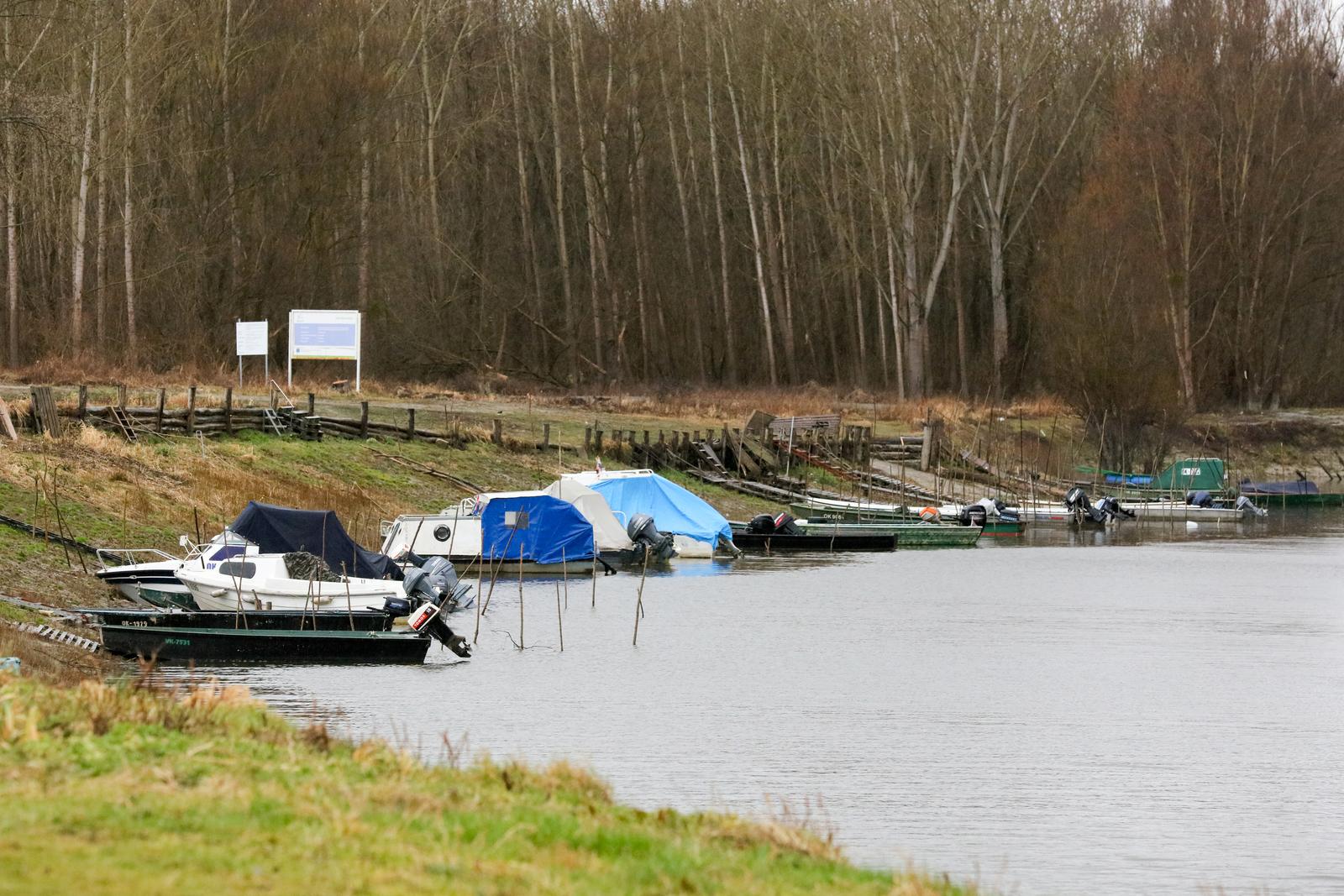
Photo: Dubravka Petric (PIXSELL)
Modern Aljmaš lived its golden age between the two world wars, when 1446 people lived there, who owned 46 businesses, and the village had 2 butchers and 3 bakeries. It was an important port on the way from the Black Sea to Budapest, which, as you can imagine, ensured that the birth rate would steadily grow. It was also an important weekend and summer home for the nobles of Osijek and Vukovar who needed a quiet place in nature, especially those who liked fishing. After the second world war, as well as the Homeland war, the population of Aljmaš unfortunately significantly declined, leaving it at approximately a quarter of what it used to be.
It is, however, slowly being rediscovered. Trying to escape a busy hectic lifestyle, many will naturally gravitate towards picturesque little places like this to spend their holidays, weekends, or retirement, but people have also started permanently moving there to live a relaxed life and raise their children in a safe environment where nature still dictates the way of life.
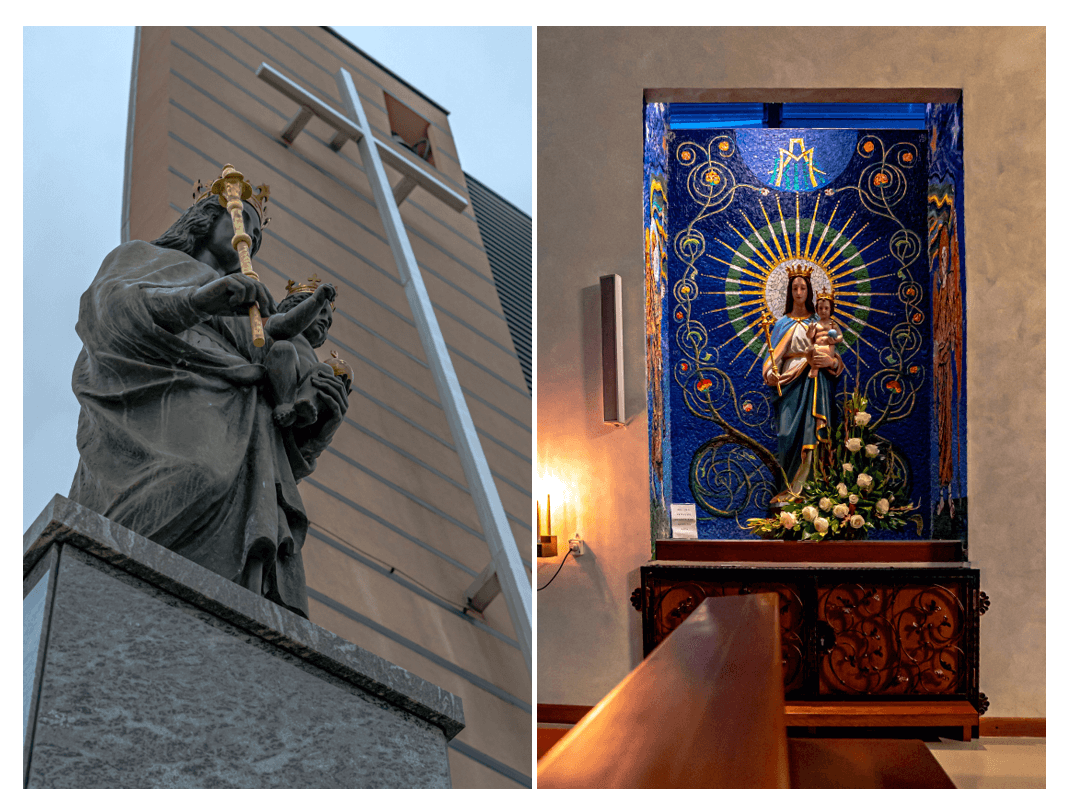
Photos: Steve Tsentserensky
Catholicism has always played a very important role here, so much so that even during the Ottoman rule when many were forced to convert to Islam, Aljmaš remained a Catholic settlement. Nowadays, it is one of the famous places of worship and pilgrimage in the name of Mary. Even though a legend does exist of a sighting of the Virgin Mary, the reason why Aljmaš became her home is different. In 1704, a statue of Mary was brought from the village of Lug in Baranja to save it from the rebellion that was brewing there against the Habsburg monarchy. A humble little church made of branches and mud stood in Aljmaš to provide shelter. Mary has been the symbol of Aljmaš ever since. In 1846 the village church burnt down, along with the statue, only leaving a painting of the former statue. A new baroque church was built, and the bishop Josip Juraj Strossmayer financed a new statue to be made in Vienna. During the Homeland war in 1991, the said church was heavily bombarded and taken down, and the statue was believed to be destroyed. In 1992, however, a Russian UN soldier found the statue with only the crown and a part of one arm missing, dressed it in his vest, and put a helmet on it to conceal it and safely transport it to Osijek. Just like the people of Aljmaš, it spent years in exile. It remained in Osijek until 1998 when it was taken back to Aljmaš. The road, of course, was the Danube. It was taken on a boat, with hundreds of fishing boats following.
Photo: Steve Tsentserensky
With the old church destroyed and the statue of Mary having been returned to Aljmaš, the local government decided to invest in a new place for worship and built the new, monumental church in 2003. It is famous for its architecture, but this does spark debate among the locals. While some think that its modern design draws people in, others disagree since its architectural integrity might not be the best, and it is questionable how long the church will withstand the humidity and the winds from the Danube.
One thing is for sure, though. The church is still an important place not only for the residents of Aljmaš but for many who visit to pray and contemplate. Without a doubt, the most important date remains today, August 15, marking the Assumption of Mary. Year after year, the holy mass in the open gathers thousands of pilgrims. Though it is a quiet celebration, the village comes alive in its former glory with people walking, talking, praying, and the children all gathering around the little stalls for ice cream, cotton candy, or plastic toys.
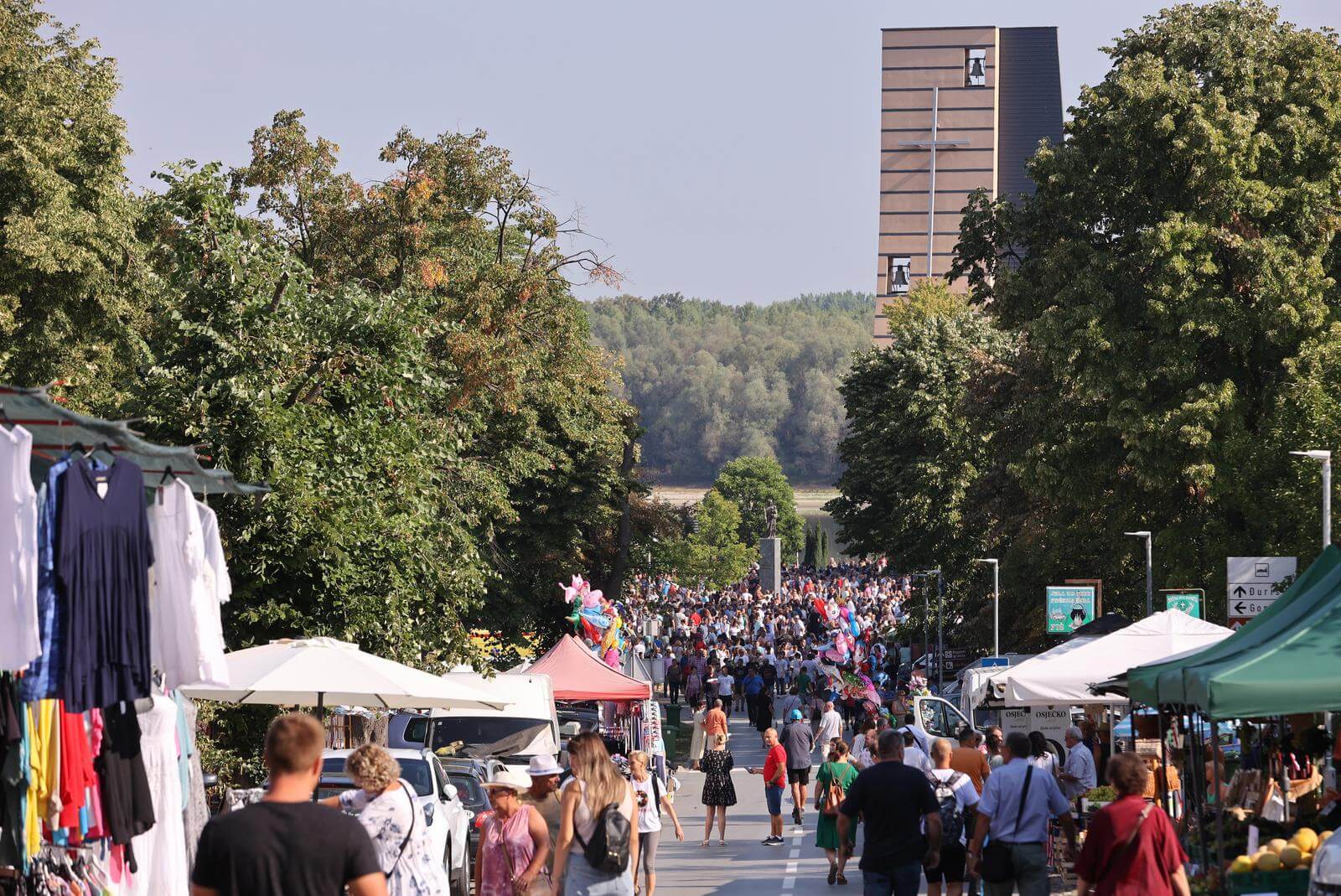
Photo: Davor Javorovic (PIXSELL)
Even though August 15 remains the most important day for Aljmaš, it is not the only day when something happens. The locals gathered in cultural societies make sure that the traditions keep on living, and that daily life is still eventful. To find out more about the local customs and traditions which live on, how the village Google makes sure they know it all, why foreigners keep buying houses there, and when you should make sure you visit, stay tuned for part 2 next week on TCN.
Special thanks to Marina, a tourist guide from Aljmaš, who works hard to keep tradition alive and who happily shared her stories with TCN.
How good is your knowledge of eastern Croatia? Take the CROMADS test above - how many places do you recognise?
For more, make sure to check out our dedicated Lifestyle section.
Velika Gospa COVID-19 Measures Around Croatia: No Procession in Sinj, Masks in Trsat
August 13, 2021 - Velika Gospa COVID-19 measures are being prepared around Croatia. While Erdut will not limit the number of pilgrims, Sinj will not hold a procession for the second year in a row, and Trsat will recommend masks even at outdoor mass.
Preparations are underway to celebrate the Feast of the Assumption (Velika Gospa). The largest number of believers is expected in Sinj, Marija Bistrica, Aljmaš, and Trsat.
"It is, as we know, the most visited day in our sanctuary by pilgrims who will flow into this valley from all sides like a river," said Rev. Ante Markić, pastor of the Shrine of Our Lady of Refuge for Dnevnik Nova TV.
The number of pilgrims is not limited, but the celebration, as last year, takes place under epidemiological measures. One of them is the ban on touching the statue and the painting.
"There will definitely be a disinfectant next to drinking water, and we ask citizens to adhere to the measures and to think of themselves and everyone else who comes after them," said Darko Barjaktarevic from the Erdut Tourist Board.
"Masks are only taken off when pilgrims find their place."
Special measures will also apply to the Shrine of Our Lady of Trsat.
"While the faithful are moving, even though all the masses are outside in Trsat, they must wear, or it is recommended, to wear masks. And when they find their place, when they sit down, they can take it off," said Krunoslav Kocijan, guardian of the Shrine of Our Lady of Trsat.
There will be no procession in Sinj again.
"Unfortunately, this is impossible to achieve if we want to be responsible, if we want to save as many people as possible from infection or, God forbid, from death," said Fr. Ante Čovo, guardian of the Franciscan Monastery of Our Lady of Sinj.
One of the specifics of the shrines in Sinj and Aljmaš is touching Our Lady's image or statue. "It is strictly forbidden on these occasions," Čovo noted.
"I always emphasize that even when there was no corona. They can perform their devotion without touching it," believes Ante Markić, pastor of the Shrine of Our Lady of Refuge.
For everything to go well, Friar Kocijan urges the faithful to adhere to epidemiological recommendations.
"We will not count how many people will come; everyone is welcome," concluded Kocijan.
For all you need to know about coronavirus specific to Croatia, make sure to bookmark our dedicated COVID-19 section and select your preferred language.


